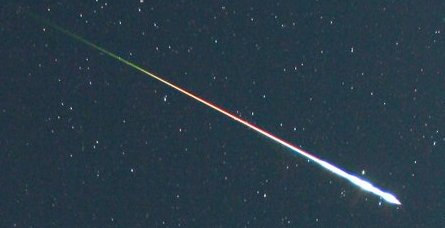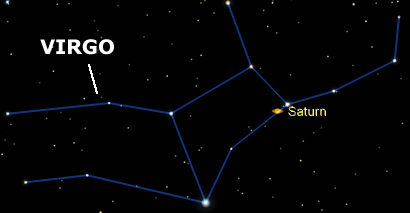Archive for the ‘Constellations’ Category
ISS and Perseids 2012
Finally we have had a break in the miserable weather and I have been able to go out and have a look at the night Sky again!
Luckily the clearer night skies have coincided with the time of the year when the International Space Station is most visible in our region. Last night I saw it for the first time this year and it was as good as it was in 2011. This year it seems to have changed its trajectory in the sky as it came in from towards the Hoe and travelled towards Yelverton, wheras last year it came from the direction of Cornwall and right over the top of our house towards the edges of Dartmoor. I would recommend to anyone to have a look each evening for it. It is currently coming into view in Plymouth for several minutes between 21:30 and 23:00, but you will have to check for exact timings. Once you see it in the Sky, then you know what it is straight away as it is much brighter than anything else and it is moving at a constant speed. If you can get hold of some binoculars you should be able to see the solar panels on each side of the main pod with ease.
It is also the time of year for the annual Perseid Meteor Shower. This year the height of the shower is on the 12th and 13th of August. I am hoping the evenings will stay clear enough on those nights to view them, however I will be out before and after those dates as you will still be able to see the miniscule dust particles light up the night sky, but less frequently. They originate from the Perseus Constellation which is basically looking towards Dartmoor from anywhere in Plymouth, so can easily be seen.
Lyrid Meteor Shower
This year the annual Lyrid Meteor Shower should be a great spectacle as the Moon will not be lighting up the sky at all. As long as you are out in the country and have the luck of a clear sky, there should be a perfect view of the meteors. Even in a lighter sky, it should be a good sight.
The height of the shower falls on the night of the 21st April with the average number of meteors spotted per hour being at about 10-20, but it has been known to reach up to 100 meteors per hour! On the nights around the peak night, you should still be able to see the occasional meteor. I had a look last night but unfortunately didn’t see any, mainly because the area of the sky where they seem to originate from (The constellation Lyra near the bright star called ‘Vega’.) was too low on the horizon and was hidden by trees.
The Lyrids are thought to be sand grain sized debris from a passing comet. When they hit the Earth’s atmosphere, they burn up, causing the light streaks in the Sky. In the past, fireballs have been seen hurtling across the sky during this meteor shower. They are thought to originate from comet Thatcher that has an orbit of 416 years with its path staying practically the same each time is passes through. This means the debris is always in the path of the Earth which is why it is an annual event.
So fingers crossed everyone gets to see a good few meteors! 😉
The International Space Station and Perseid Meteors
During the month of August the ISS (International Space Station) could be seen in the sky during most evenings. The first time that I saw it was on Sunday 21st August when my family and I were on holiday in Weymouth. I wasn’t sure what to expect really as I didn’t know how bright it was going to be and how easily it could be made out from the rest of the stars in the sky. I had a NASA app on my phone which gave the general direction of where the ISS would be coming from and the length of time it would be viewable in the sky, but I was still worried that I wouldn’t see it.
Whilst on the look out, I was scanning the sky generally for constellations and satellites and to my amazement saw the best two shooting stars I had ever seen in my life. These were obviously not actual shooting stars but were two meteors from the Perseid Meteor Shower. This was especially great as the height of the meteor shower was a couple of weeks before, so these would have come from the tail end of the passing shower and were totally unexpected. They were so bright and the trails in the sky were long and wide. It was brilliant to see and completely lucky that I was looking at that area of the sky at the right time. I knew these were part of the Perseids as their general direction originated from towards the constellation Perseus, and from my position, they shot past in front of Cassiopeia as well.
The image below is the best image I can find that shows almost exactly what I saw in the sky.
Not long after, I suddenly spotted a very bright light in the sky coming from the direction where the ISS was meant to originate from. The object was moving as well which meant that what I was seeing was the ISS, and it was bang on time (the app gives the time of when the ISS becomes visible in the sky). Where I was watching was in the direct path of the ISS, so it flew directly over the top of me which was great to see! Looking at it you could just make out the solar panels and the general shape which made it an amazing sight. It lasted for about 4 minutes before it passed by and faded to black as it moved away from the sun (which was reflecting off the panels which is why it was visible in the sky). After seeing this, I was out most evenings when the sky was clear to view the International Space Station pass overhead, and I would recommend the viewing to anyone as it is a great thing to experience and puts a lot of things into perspective. Unfortunately, now we are in mid-September, the ISS has moved out of viewable range in the evenings although it can be seen for a fleeting moment during the early hours of the morning on occasions.
The sighting of the International Space Station also cleared up a little mystery from earlier in the year when I was out at Mount Batten in Plymouth and saw a very bright object move across the sky at a fairly brisk pace. At the time I wasn’t sure what it was and thought it may have actually been a UFO, but after seeing the ISS during the Summer, I can now say that what I saw in March was the ISS travelling across the sky above us. Am glad this has been cleared up although it would have been nice if it was a UFO! 😉
Perseid Meteor Shower 2011
The Perseid Meteor Shower (the ‘Perseids’) will reach its peak activity on Saturday 13th August this year. Unfortunately, this coincides with a full moon this year which will make the sky so bright that only the closest and largest meteors will be seen. But don’t ignore it for this year, as it will still be possible to view them!
The Perseids originate from the constellation Perseus, but actually have nothing to do with any of the stars in the constellation. They are actually rock fragments left over from the comet Swift-Tuttle when it last flew near the Sun. So if you can find the constellation of Perseus in the night sky, you will know where to look for the meteors streaking across the sky. However, don’t just look at the constellation, look at the area around it as you will still be able to see them as they only originate from Perseus.
Let’s hope for a clear sky and good viewing to everyone!
Saturn in the Virgo Constellation
For the past few weeks Saturn has been in a great position in the sky to view through either binoculars or telescopes. It is currently in the Eastern Sky within the Constellation of Virgo.
I had been trying for a long time to get a good view of the planet via my telescope, but had been scuppered a lot of the time due to bad weather and haze in the sky in the evenings. The sky has also been brighter later in the evenings now, so I have had to go out later and later each night to view it. When you have an energetic 2 year old, this is a difficult task as by that time of night, you are shattered!! 😉
Eventually, after many attempts, I managed to get a great view of the planet and could very clearly make out the rings around it. It was an amazing site and I was very pleased that I managed to get my telescope to focus in correctly.
Some of you may be interested to know that the rings of Saturn are so big that they would nearly reach all the way to the Moon from the Earth, and the planet is so dense that it would float on an ocean. Amazing. Saturn also has 60 moons with the most famous being Titan, but unfortunately I was unable to spot any of these through the telescope, though I will try again when the weather is better!
If you have any thoughts or statistics about Saturn, please leave them as comments to this post as I would find any other information very interesting indeed! Thanks!



